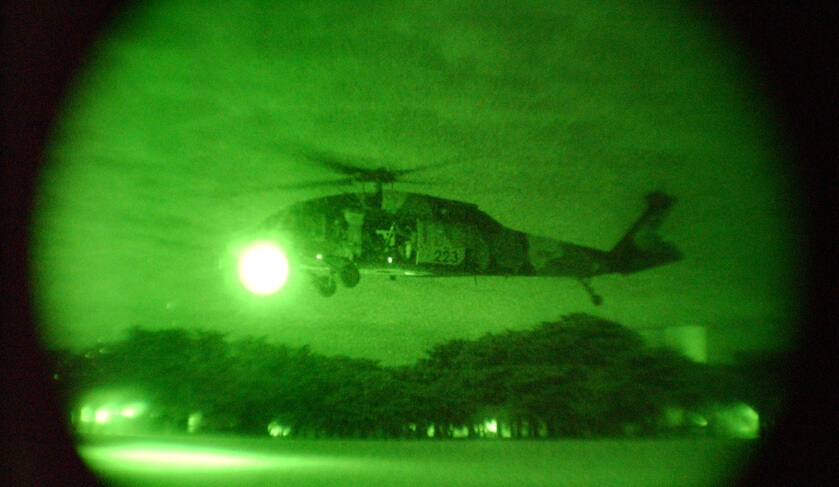Researchers at the Australian National University (ANU) have ‘accidentally’ discovered a revolutionary night vision aid.
To continue reading the rest of this article, please log in.
Create free account to get unlimited news articles and more!
“That’s the way research works,” said Dragomir Neshev, Professor at the Nonlinear Physics Centre at the Research School of Physics and Engineering, one of the key scientists behind the new technology. “You start somewhere, but then you realise something a lot more powerful, an application that can help people.”
Neshev and his teams were looking into one area of advance photonics, however they suddenly realised they had discovered a new, lightweight night vision goggle application that does not require tubes.
“We’re still at the proof-of-concept stage,” Neshev told Defence Connect. “We anticipate that with the right funding we could have a prototype ready within four years.”
“What we’ve done is embedded tiny nanocrystals into a thin, transparent film, almost like cling wrap,” explained Neshev. “It’s no thicker than say, a hair.
“It’s totally flexible, so it can be applied to glass, or glasses or any transparent surface. These crystals concentrate the light so strongly that the colour of the light changes from infrared to visible.”
After publishing their results, the researchers started looking at applications their product would suit and it didn’t take long for them to realise that there were plenty of opportunities in the defence space.
“We realised that this could be used for night vision, to convert invisible light into visible.”
Neshev and his team then encountered an issue with light signatures – heat from human bodies emits much weaker infrared light than the lasers used in the group’s original research.
“What we’ve come up with now is to mix in the nanocrystals a strong light from a laser and the weaker light from an infrared source,” Neshev told Defence Connect.
“It still requires power for the laser, but the good news is it doesn’t require the tubes you’d currently see on night vision goggles.
“The semi-conductor laser can be confined within this layer so it can’t be seen by the [naked] eye or anyone else. So, in principal, this really opens up a lot of opportunities to create new types of night vision goggles which are small and light weight.”
The Experimental Photonics group that Neshev leads collaborates closely with several other groups at the research school, importantly, the groups of Chennupati Jagadish (semiconductor growth) and Yuri Kivshar (theoretical photonics).
“We have good facilities for fabrication through the ANFF (Australian National Fabrication Facility) and characterisation mostly from ARC (Australian Research Council) funding,” Neshev said.
Neshev and his teams have recently applied for funding from DARPA in the US and are now looking into possibilities with the Australian Defence Force through CDIC and the Innovation Hub.

 Login
Login







